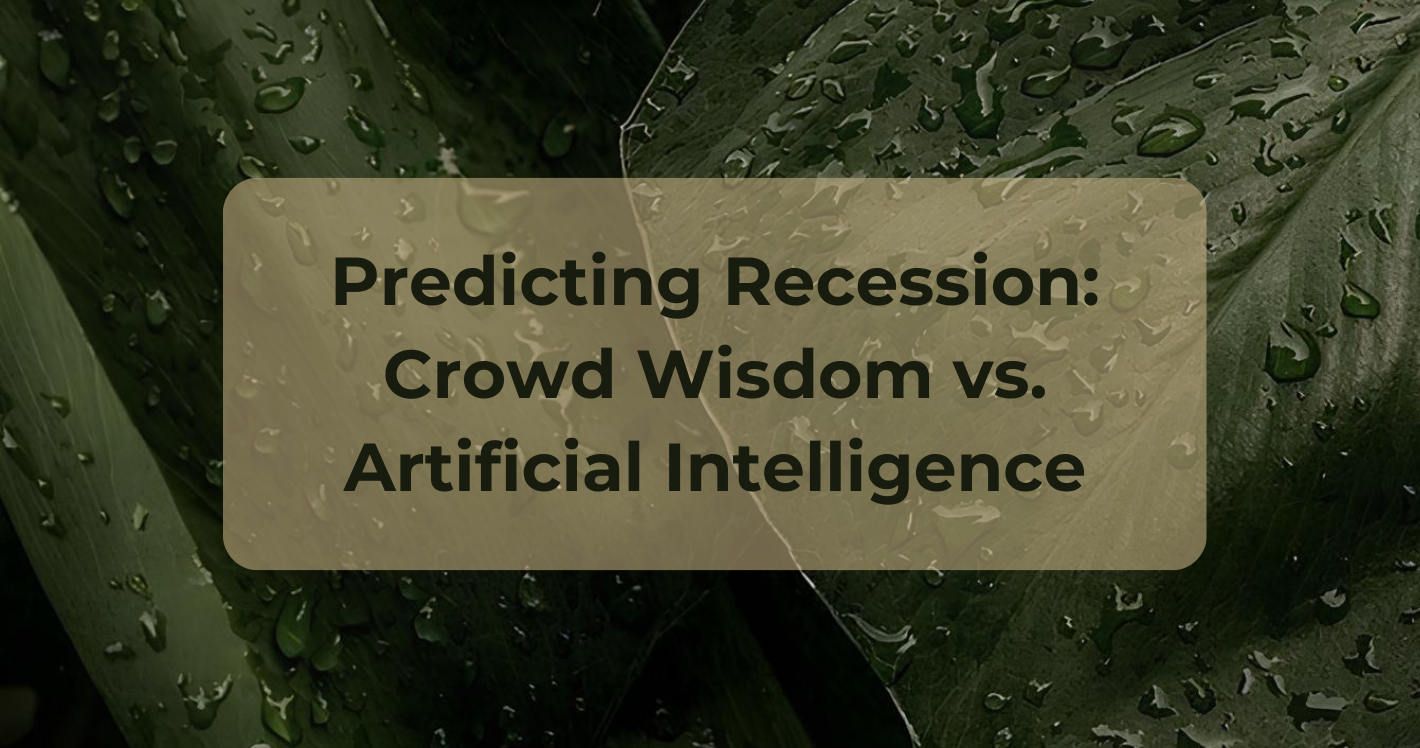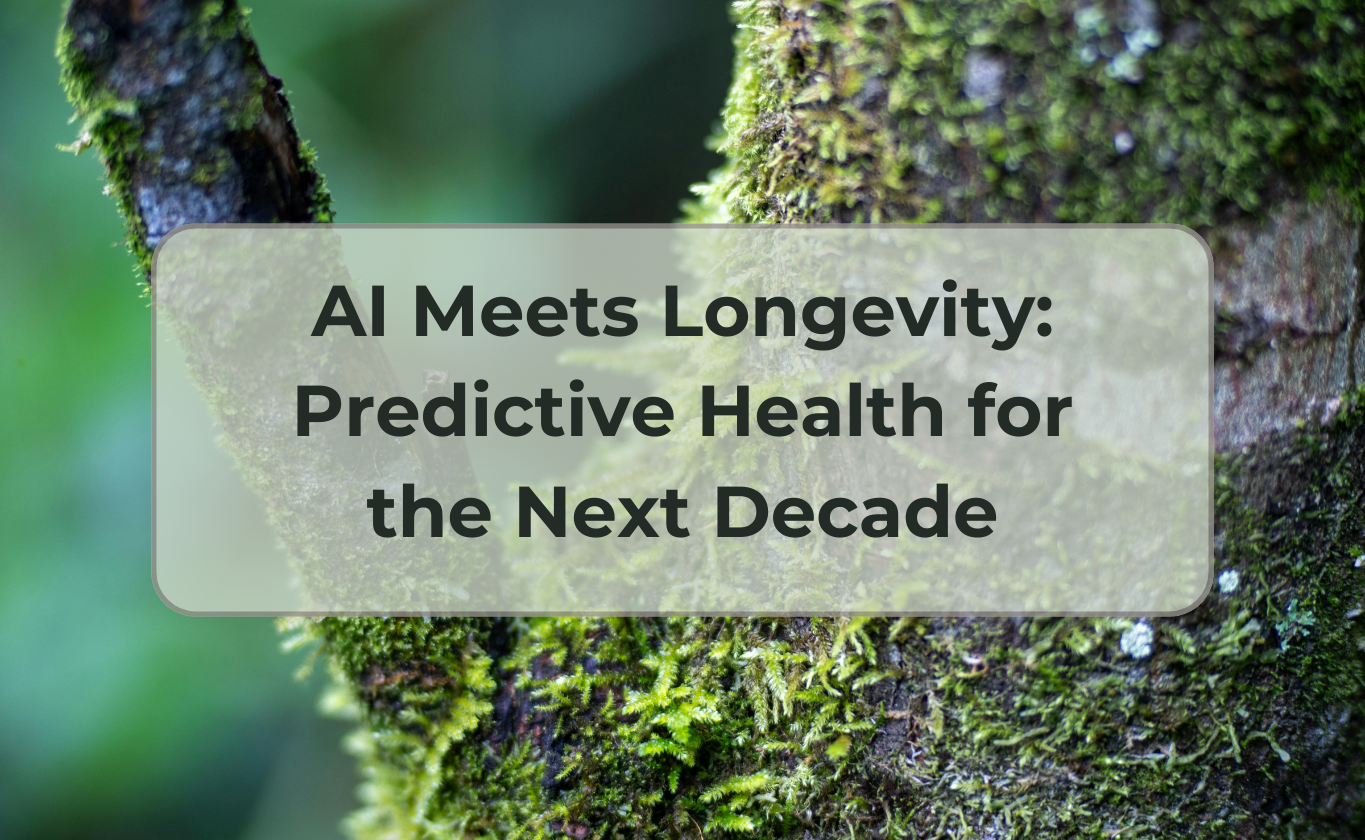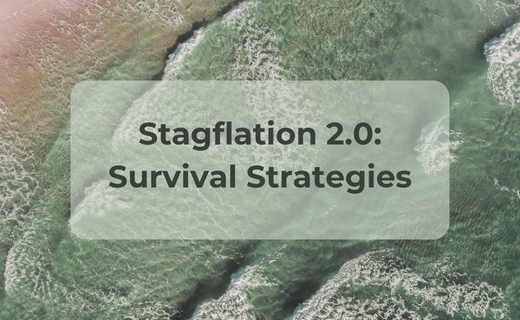Available in other languages:
Español | Français | Deutsch
Introduction: Can We Trust the Crowd or the Code?
Predicting recession is one of the most critical challenges in modern economic strategy. Accurate forecasts influence government policy, investment planning, and job markets. Yet, traditional economic models have often failed to anticipate crises.
As a result, new methods are gaining traction. Some rely on collective human insight, commonly referred to as crowd wisdom. Others depend on artificial intelligence (AI), which analyses vast data sets to detect patterns. As the economy becomes increasingly complex, the question becomes more urgent: Which is better at predicting recessions—people or machines?
Crowd Wisdom in Predicting Recession
What Is Crowd Wisdom?
Crowd wisdom is the idea that the average judgment of many individuals can be surprisingly accurate. A classic example comes from 1906. Visitors at a British fair guessed the weight of an ox. The average of nearly 800 guesses was within 1% of the correct weight.
In modern times, prediction markets and online communities have used similar principles. They have, at times, correctly forecasted election outcomes and market shifts. These cases demonstrate how collective thinking can also aid in predicting recessions.
How Does It Work?
Crowd-based forecasting works best when three factors are present:
- Diverse opinions: Each participant sees a different part of the picture.
- Independence: People must not influence each other.
- Aggregation: A method must be established to combine all inputs into a single forecast.
If these conditions are met, the crowd can sometimes outperform experts. However, the size and composition of the group also matter. A recent study, titled “On the Wisdom of Crowds (of Economists),” found that the accuracy benefits of diversity tend to decline as the group grows larger. In other words, more isn’t always better.
This means that careful design of forecasting crowds is essential. Too many voices can create noise instead of insight.
Limitations of Crowd Forecasting
Despite its strengths, crowd wisdom has its flaws.
For example, people can fall into herd behaviour. This often leads to bubbles or crashes. Emotional bias—like fear or greed—can cloud judgment. Furthermore, some people may have better access to data, creating information asymmetry.
Aggregation itself is a challenge. Translating thousands of opinions into a single prediction can introduce errors. The crowd also may lack accountability, and signals from less informed members can drown out those with valuable insights.
Moreover, emotion can spread rapidly through social platforms. During moments of market stress, panic or euphoria can override rational thinking. This is particularly dangerous when trying to predict a recession, where leading indicators can be subtle and easily distorted by emotion.
AI’s Role in Predicting Recession
How AI Makes Predictions
AI uses machine learning to analyse economic patterns. Tools like random forests and neural networks look for complex relationships in data. For instance, they can identify links between interest rates, spending habits, and changes in GDP.
AI also uses Natural Language Processing (NLP). This allows systems to scan news, social media, and earnings reports. By doing so, they detect shifts in sentiment.
AI models often outperform traditional methods. Studies show that machine learning improves accuracy by 10% to 40% when forecasting inflation or GDP. This is not just because of more data. It’s because AI can detect nonlinear patterns that older models miss.
These gains are significant. Unlike traditional models that assume linearity, AI captures irregular dynamics in economic systems. This makes it especially useful for forecasting in volatile environments.
Why Businesses Are Adopting AI
In 2024, 13.48% of EU companies (with 10+ employees) used at least one AI tool. Large firms led the way, with 41.17% using AI. Small and medium companies lagged. The tech and professional services sectors had the highest adoption rates.
As a result, AI is becoming increasingly integrated into business decision-making. More data is being generated and analysed than ever before. This enhances AI’s ability to detect early economic signals and improve predictions of recessions.
The more companies use AI, the more data becomes available to train economic models. As this ecosystem grows, feedback loops between AI, businesses, and markets may significantly enhance predictive capabilities.
Benefits of AI in Economic Forecasting
AI has many strengths. It can:
- Process large datasets quickly
- Remain free of emotional bias
- Identify patterns humans may overlook
For example, JPMorgan’s NLP-based model in 2023 improved short-term recession forecasts by 18%. AI detected changes in news sentiment before traditional models identified warning signs.
Another study from PwC highlights AI’s broader impact. Industries most affected by AI show three times higher revenue growth per employee. Wages also grow twice as fast in these sectors. This suggests AI not only improves forecasting but also reshapes the economic data used for predicting recession.
If AI increases productivity and workforce efficiency, this indirectly shifts macroeconomic indicators. That can create a moving target for analysts, requiring models to adapt to structural economic change.
The Challenges AI Faces
Despite its strengths, AI has weaknesses.
One is the black box problem. Many models produce forecasts without clear explanations. Also, AI depends on past data. This makes it poor at handling “black swan” events, such as COVID-19.
MIT reported that in early 2020, AI-based forecasts were correct in fewer than 30% of cases. The pandemic’s uniqueness made it nearly impossible to model.
Another issue is data quality. Insufficient data leads to bad predictions. Even in Europe, where AI use is growing, its impact on productivity may remain modest. According to the IMF, AI is expected to raise productivity by only 1% over the next five years.
While that figure is better than in the U.S., it’s still lower than many experts hoped. In such a climate, crowd insights may retain relevance. Especially in Europe’s slower-growth environment, consumer and business sentiment could remain crucial for predicting recession.
Real-World Cases: When Forecasts Were Right—or Wrong
When the Crowd Got It Right
In 2022, Reddit users on r/Economics noticed early signs of a slowdown. They observed falling consumer demand, late deliveries, and a decline in job postings. These warnings came months before official data confirmed a downturn.
This illustrates how anecdotal evidence, when aggregated, can aid in predicting recessions.
When the Crowd Was Wrong
The dot-com bubble of the late 1990s is a clear example. Investors believed that tech stocks would continue to grow indefinitely. That belief—shared by millions—led to a market crash.
Crowd optimism gave way to collective delusion. Emotional excitement drove prices far beyond their fundamental value. When reality caught up, the crash was swift and severe.
AI’s Successes
In 2018, Kensho used AI to predict a market shift. It analysed central bank statements and found early signs of tightening, and markets adjusted weeks later, confirming the forecast.
This case demonstrated AI’s ability to process unstructured textual data and derive economic signals. It showed how AI could supplement traditional macroeconomic models.
AI’s Failures
During the COVID-19 pandemic, AI models largely failed to perform effectively. They lacked data on similar events and were unable to adjust in time. This highlighted the limits of AI in predicting recession under extreme uncertainty.
These limitations reveal that, despite its strengths, AI still requires human guidance. No algorithm could anticipate global lockdowns and government rescue packages.
Combining Strengths: The Hybrid Approach to Predicting Recession
Why Both Are Better Together
Neither crowd wisdom nor AI is perfect. However, together, they can cover each other’s weaknesses.
AI is excellent with numbers and scale. People are better with context and judgment. For instance, Good Judgment Open combines human forecasts with algorithmic analysis. The result? Accuracy improves by about 20%.
Hybrid systems strike a balance between quantitative power and human intuition. This is especially valuable in uncertain environments where data is incomplete or contradictory.
Examples of Hybrid Systems
Some platforms allow AI to make the initial forecast. Then, humans adjust or explain the result. Over time, the system learns from these corrections. This two-way process helps AI better understand real-world complexity.
These systems are already in use in financial markets and political forecasting. In time, they may become the standard for predicting recession.
Crowds can provide context. AI can quantify it. Together, they provide a more comprehensive picture.
Our expert guidance in business forecasting will help you identify and mitigate threats and transform external challenges into strategic opportunities. [Contact Us]
Conclusion: Who Will Predict the Next Recession?
Predicting recession is still one of the toughest challenges in economics. Crowd wisdom brings intuition and experience. AI brings data and speed. Both have failed. Yet both have also succeeded.
The future likely belongs to systems that blend the two. As AI gets better, it won’t replace human insight—it will work alongside it.
The key question remains:
As machines learn more, will they replace our intuition—or will human judgement always have the final word in predicting recession?





